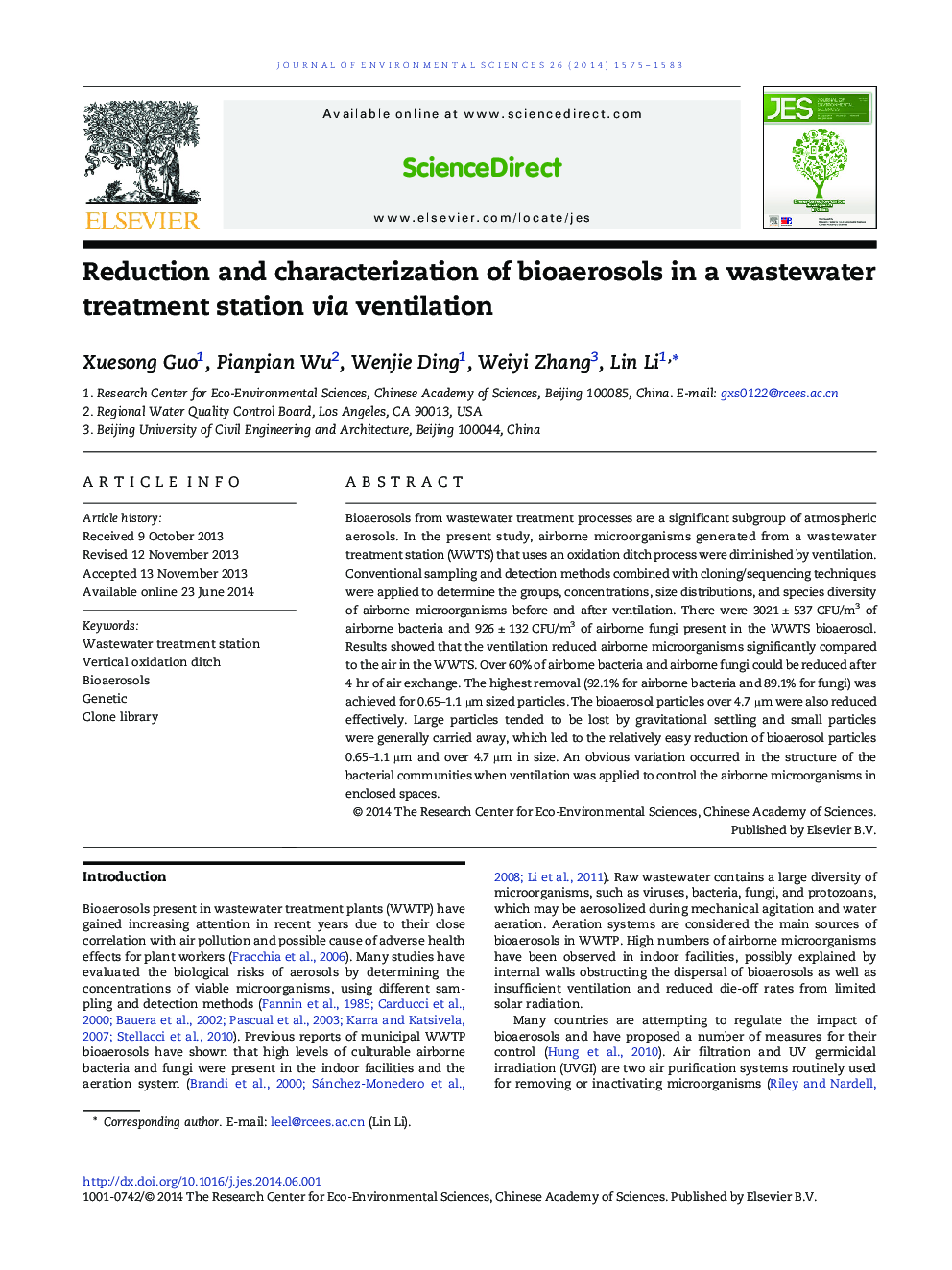| Article ID | Journal | Published Year | Pages | File Type |
|---|---|---|---|---|
| 4454260 | Journal of Environmental Sciences | 2014 | 9 Pages |
Bioaerosols from wastewater treatment processes are a significant subgroup of atmospheric aerosols. In the present study, airborne microorganisms generated from a wastewater treatment station (WWTS) that uses an oxidation ditch process were diminished by ventilation. Conventional sampling and detection methods combined with cloning/sequencing techniques were applied to determine the groups, concentrations, size distributions, and species diversity of airborne microorganisms before and after ventilation. There were 3021 ± 537 CFU/m3 of airborne bacteria and 926 ± 132 CFU/m3 of airborne fungi present in the WWTS bioaerosol. Results showed that the ventilation reduced airborne microorganisms significantly compared to the air in the WWTS. Over 60% of airborne bacteria and airborne fungi could be reduced after 4 hr of air exchange. The highest removal (92.1% for airborne bacteria and 89.1% for fungi) was achieved for 0.65–1.1 μm sized particles. The bioaerosol particles over 4.7 μm were also reduced effectively. Large particles tended to be lost by gravitational settling and small particles were generally carried away, which led to the relatively easy reduction of bioaerosol particles 0.65–1.1 μm and over 4.7 μm in size. An obvious variation occurred in the structure of the bacterial communities when ventilation was applied to control the airborne microorganisms in enclosed spaces.
